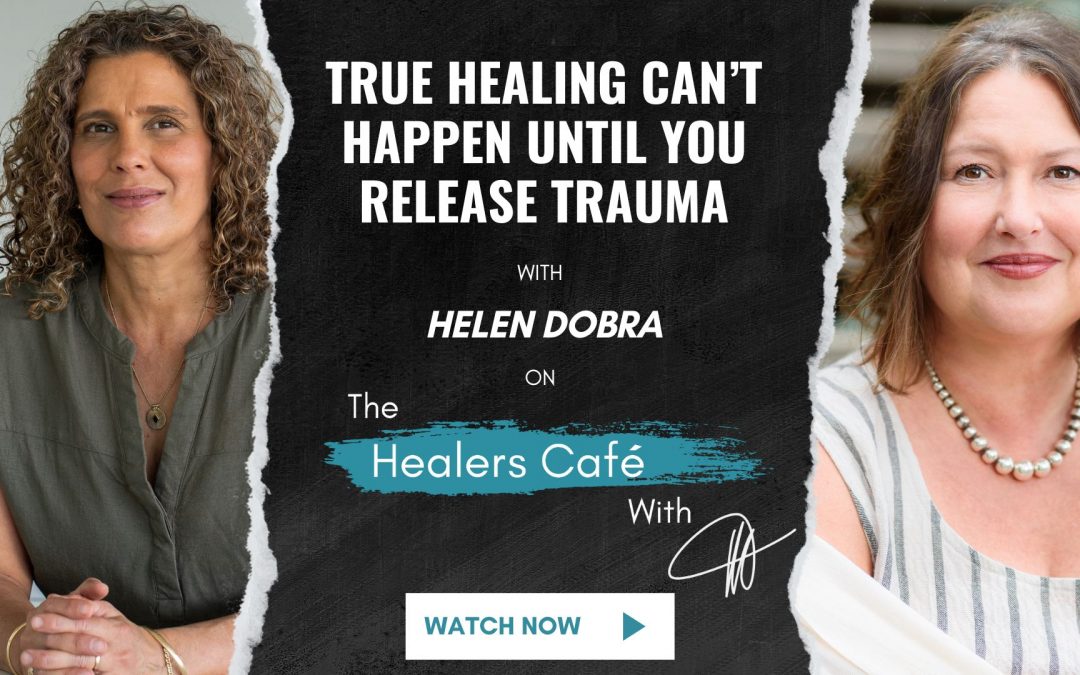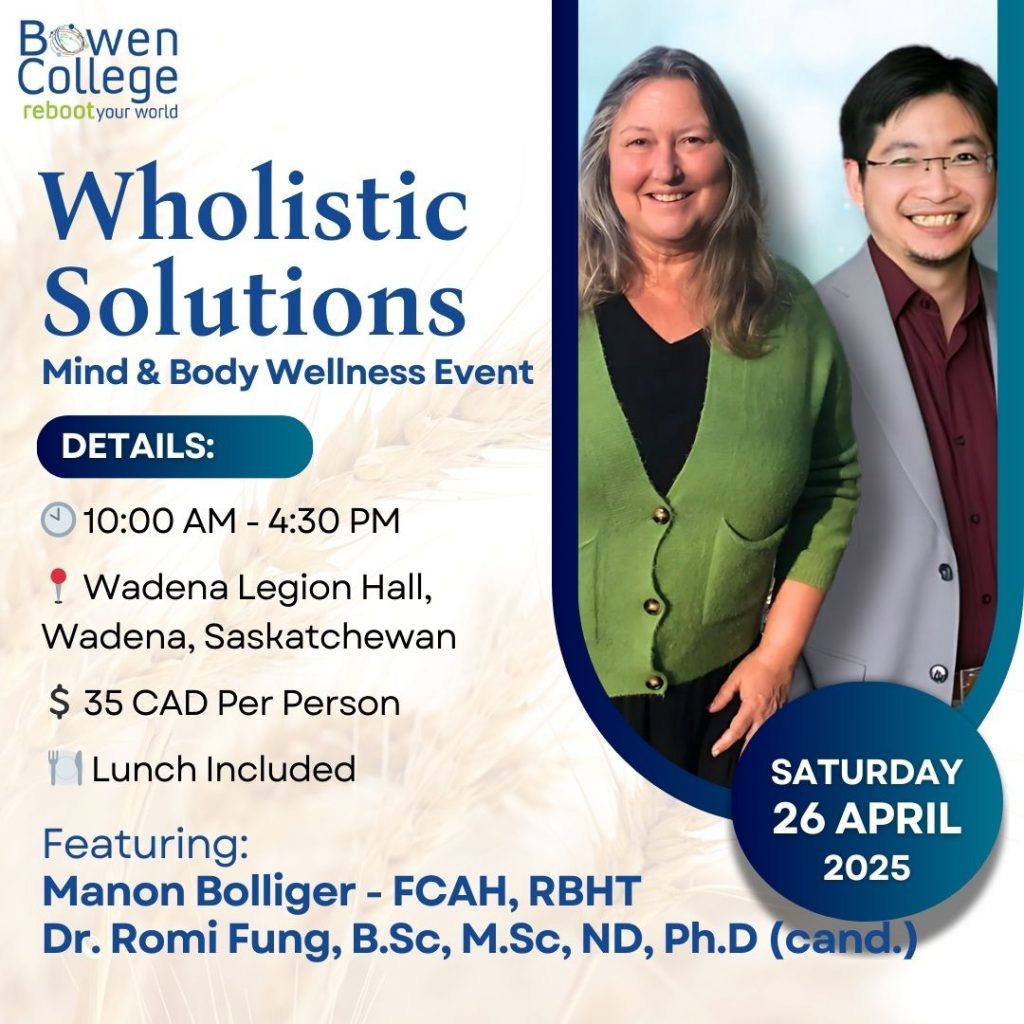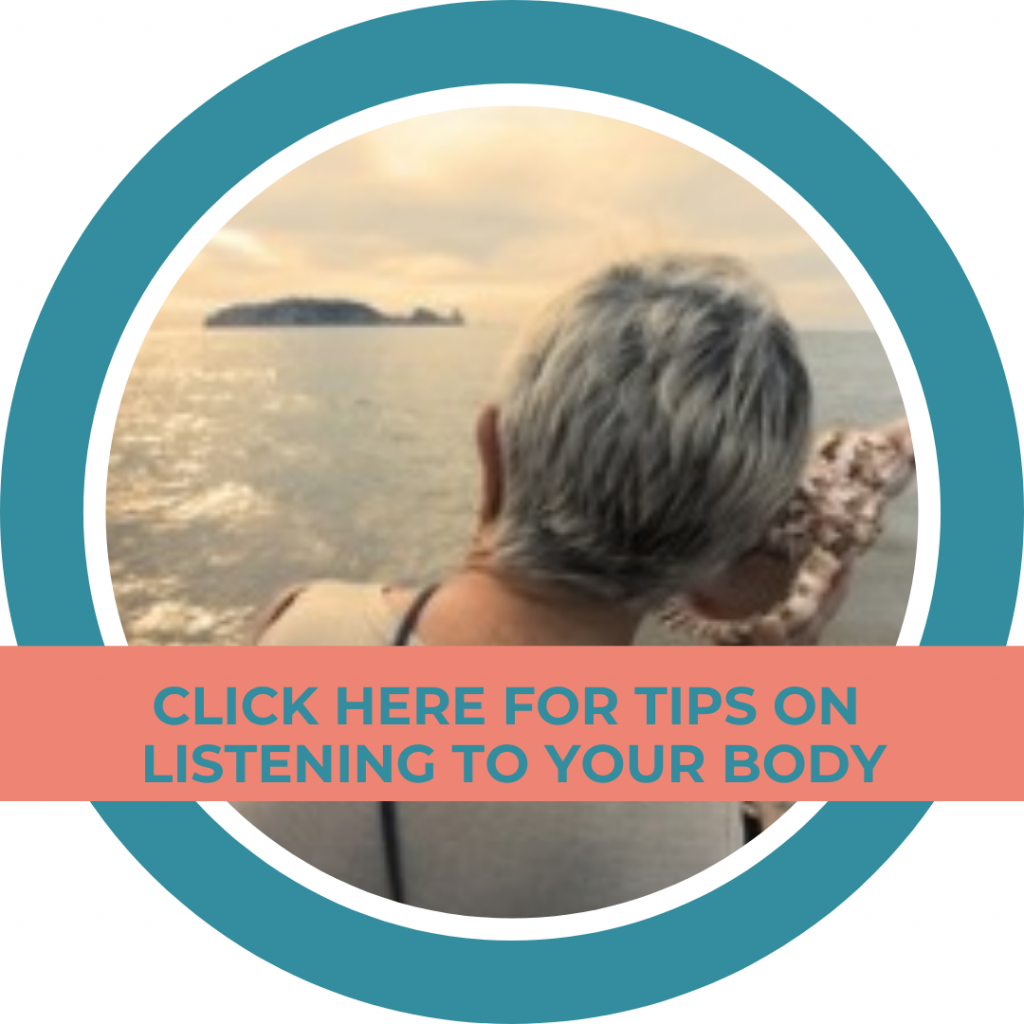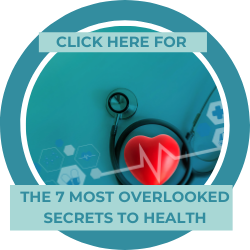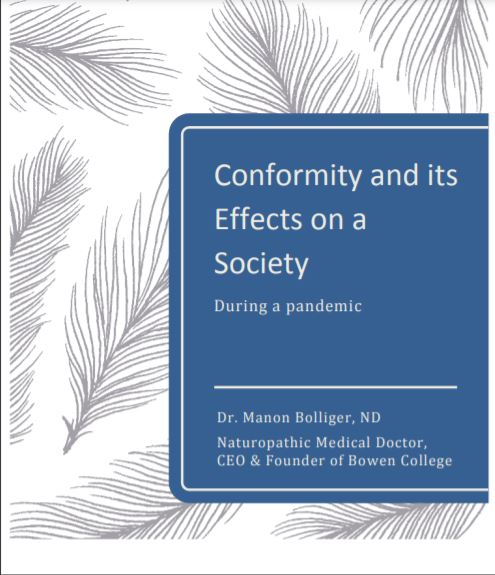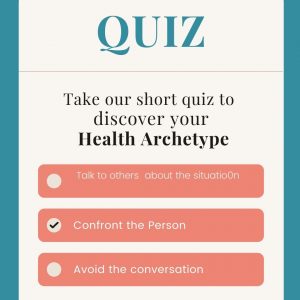True Healing Can’t Happen Until You Release Trauma with Helen Dobra on The Healers Café with Manon Bolliger
In this episode of The Healers Café, Manon Bolliger, FCAH, RBHT (facilitator and retired naturopath with 30+ years of practice) speaks with Helen Dobra about the how numerous therapies can’t work until stored trauma is released form the body and mind.
Highlights from today’s episode include:
Manon Bolliger 06:50
We’re in a system, generally, where people don’t understand yet the full impact of trauma and the emotional aspect of trauma. So, they see injury, and they have no idea how to address that part, you know, so they go to chiropractors to, you know, different types of body workers that try to put the pieces together. But until you release the trauma, nothing really happens.
Helen Dobra 11:16
You know, we can release a certain amount from the body somatically. But if those events are happening in the subconscious, it’s like, the brains already overloaded, so it doesn’t take much to get overloaded again.
– – – – –
Helen Dobra
And I believe no one escapes everyone that, you know, this intergenerational trauma that we’ve inherited, that it’ll come up to the surface for anyone, everyone at some point. And we can either decide, am I going to continue down that path or not?
ABOUT HELEN DOBRA:
Bachelor of Science Degree – MQ
Diploma Bowen Therapy – BTA
Massage Therapist
TRTP practitioner – The Richards Trauma Process
Mindful Wellness Mentor
Applied Kinergetic Kinesiology
Wellness Educator
Meditation Facilitator
Qigong Instructor
Wilderness Treking Guide
Previous career:
Tafe Teacher Environmental/Eco Education
Outdoor Education Instructor
Eco Tourism Guide
Busland Regeneration and Restoration Leader
Core purpose/passion: My purpose is to love deeper…
share my gifts with the world, walk softly and shine my light .
Website SeedsofWellbeing.com | NaturalTherapyInstitute | Instagram | Facebook | BowenTherapyDocumentary | YouTube
ABOUT MANON BOLLIGER, FCAH, RBHT
As a recently De-Registered board-certified naturopathic physician & in practice since 1992, I’ve seen an average of 150 patients per week and have helped people ranging from rural farmers in Nova Scotia to stressed out CEOs in Toronto to tri-athletes here in Vancouver.
My resolve to educate, empower and engage people to take charge of their own health is evident in my best-selling books: ‘What Patients Don’t Say if Doctors Don’t Ask: The Mindful Patient-Doctor Relationship’ and ‘A Healer in Every Household: Simple Solutions for Stress’. I also teach BowenFirst™ Therapy through Bowen College and hold transformational workshops to achieve these goals.
So, when I share with you that LISTENING to Your body is a game changer in the healing process, I am speaking from expertise and direct experience”.
Mission: A Healer in Every Household!
For more great information to go to her weekly blog: http://bowencollege.com/blog.
For tips on health & healing go to: https://www.drmanonbolliger.com/tips
SOCIAL MEDIA:
– Linktr.ee | Rumble | Gettr | Facebook | Instagram | LinkedIn | YouTube | Twitter |
About The Healers Café:
Manon’s show is the #1 show for medical practitioners and holistic healers to have heart to heart conversations about their day to day lives.
Subscribe and review on your favourite platform:
iTunes | Google Play | Spotify | Libsyn | iHeartRadio | Gaana | The Healers Cafe | Radio.com | Medioq | Audacy |
Follow The Healers Café on FB: https://www.facebook.com/thehealerscafe
Remember to subscribe if you like our videos. Click the bell if you want to be one of the first people notified of a new release.
* De-Registered, revoked & retired naturopathic physician after 30 years of practice in healthcare. Now resourceful & resolved to share with you all the tools to take care of your health & vitality!
TRANSCRIPT
Introduction 00:00
Welcome to the Healers Café. The number one show for medical practitioners and holistic healers, to have heart to heart conversations about their day to day lives, while sharing their expertise for improving your health and wellness.
Manon Bolliger 00:20
So, welcome to the Healers Café. And today I have with me Helen Dobra, and well, I guess we met over a wonderful summit that she hosted. And let me tell you a little bit about her. So she is…she has a Bachelor of Science, a diploma Bowen Therapy, she’s a massage therapist. She’s also a practitioner of the Richards Trauma Process does apply to kinergenetic, kinesiology. She’s a Wellness Educator, a mediation facilitator, a shegone instructor, a wilderness tracking guide, and a mindful wellness mentor. So that’s a whole bunch of things. I know you were part of creating a wonderful movie on Bowen therapy. So I’m just gonna first pass it to you. And we’ll welcome you. Yeah, welcome. Let’s start with that.
Helen Dobra 01:23
Thanks Manon. Yeah, thanks so much for having me on the Healers Café. What a privilege.
Manon Bolliger 01:29
So I think my first question to you really is what led you to this path? I mean, you’ve gotten lots of skills, lots of modalities, but that’s usually not the, you know, it’s not the modalities that first get us into the path. It’s usually, you know, other things that bring us there and then we discover on our path, the things that make sense. Is that your case or how was your, you’re coming into this?
Helen Dobra 02:02
interesting question. I was, I was just thinking about that the other day. I suppose I was born into a family of healers, I spent a lot of time with my grandparents growing up, you know, they kind of partly raised me. They were first generation Australian, from Eastern Europe, from Hungary, and Serbia. And my grandmother used always a lot of herbs and tinctures and was always researching herbs. And my grandfather, he learnt some techniques while he was in the army. And that was kind of manipulation, I suppose. Like people used to come to him to fix sprained ankles, and wrists and things like that. So I’d always have people come into our house. And, I suppose, when I’d finished, I was in school, I knew that I was going to be doing this work and I was going to study one day. But at the time, it wasn’t very well recognized. And I thought I’d get my science degree because my first passion was …
Read more...
the environment. And I wanted to work in the bush and I thought, well, for a woman to be able to work in the environment, the obvious thing for me to do was do my science.
Manon Bolliger 03:24
Hmm. Interesting. Yeah, what do you feel about that now? If you were guiding, you know? Yeah, a person to follow up footsteps, do you agree with all your footsteps?
Helen Dobra 03:40
Yeah, I think I wouldn’t have been mature enough to do the work that I do now. And it’s like, I wouldn’t have been able to work in a clinic sort of situation like I am now. So having that background just sort of has given me a well rounded baseline, I suppose foundations to do the work that I do in a much more holistic way. I suppose the other thing going back to your question was why I also it kind of flowed into therapy. I thought that I do it a lot later in life. But I had a…I was into extreme sports. And I had a back issues noticeable from probably the age of 16. And my first manipulation was on a trip, and my back was really sore. I was carrying kind of like a 15 kilo pack in the wilderness. And there was a chiropractor on the trip and said, Well, you know, your pelvis is out of alignment. Laid me down and gave me this kind of really brutal treatment back then, which was, you know, that force manipulation. But that was ongoing back issues for a really long time. And that was the treatment that I would get. And I was in a sort of climbing accident in the Himalayas, when I was 25. And my life turned around at that point, when I returned back to Australia. My back was really bad at that point. And I was having chiropractic and osteopathic twice a week, and it wasn’t holding. And, I was also it was, it affected my mental health, but also, because on this expedition, it was a really quite a traumatic situation where we were in an avalanche. And so I…there was 12, caught in the avalanche. And I was very close to being in that avalanche to the person that I was standing next to a 14 year old porter that was taken by an ice sheet. So for me, I think I went into depression about that. And it was interesting how it affected my mental health, but also my body. And it was only till later, when I was 25, I sort of went through my own healing journey. So I was 25 and for a year, I was in a lot of pain and depressed after that trip coming back to Australia. And then I, you know, transformed my life and my back was better. But it was…looking back now, it was very linked to my mental state, and the trauma. And then, you know, following that path now, I’ve sort of come full circle to understand deeply how the what’s going on in the subconscious affects our bodies and our health.
Manon Bolliger 06:50
Yeah, absolutely. And, you know, what you’re saying about trauma too, right. We’re in a system, generally, where people don’t understand yet the full impact of trauma and the emotional aspect of trauma. So, they see injury, and they have no idea how to address that part, you know, so they go to chiropractors to, you know, different types of body workers that try to put the pieces together. But until you release the trauma, nothing really happens. You know, and I’ve had lots of patients that, because of Bowen therapy, have had that shift, you know, where they actually are getting better, because the trauma is…we’re able to address the actual trauma, you know. So how did you address the trauma? And how did…what was your steps in you’re in your discovery of all of this?
Helen Dobra 07:57
Well, it’s only really, in the last 10 years…well I’ve been practicing for about 16. And I started to see, I was always interested in mind, body Bowen, it was like something that I was instantly gravitated towards. And started using the meridian ancient Chinese system looking at the energy pathways. So pretty much for 16 years, I’ve always been looking at that as a diagnostic tool. And it was interesting the patterns that I was seeing with clients that were coming in how their symptoms would be mirroring, you know, the tools, the diagnostic tools of what were the emotional link was between what was going on in the body. So I’d always sort of, I was always investigating and looking and really interested in in that process. And, it wasn’t,,,but I was always kind of having the science mind, it was very scientific focus, I’d always be sort of working it out. And then I saw that it was people would be coming out with their stories, and it would always mirror what I was saying within the meridian system. And then it was from observation of my own experiences, over years and having other stressful events happen. Going through more of my own personal journey, where I was like, you know, I’m a Bowen Therapist, and this is still happening to my back. Why is you know, my back is a consistent issue. And then I started researching about the psoas and that was from the Eastern philosophies with yoga. And I started linking you know, what was going on in the stress response and what was happening to the psoas and also linking that to the Eastern, the meridian system and slowly as I kept researching all the pieces of the puzzle, were starting to come together. Also studying, you know, TRTP trauma, because I went through quite a traumatic breakdown in my long term relationship. And from that point, I had serious insomnia. And the insomnia was so bad that it was going for days and days. So I was trying to bring my body back to balance. But obviously, the traumas had stacked and it was after studying the TRTP and applying, and then studying Qigong as well, was I really understanding the effect that the stacking of trauma has on the autonomic nervous system, and how that people don’t realize as stressful events stack, the subconscious remembers everything. And, we can have, you can go to different therapies, but it doesn’t matter what it is it can be symptom based, even complementary therapies can be symptom based, because we’re not actually releasing from the brain.
Manon Bolliger 11:14
Yeah.
Helen Dobra 11:16
You know, we can release a certain amount from the body somatically. But if those events are happening in the subconscious, it’s like, the brains already overloaded, so it doesn’t take much to get overloaded again. A little simple thing, you get tired, because the body’s already on overload, you know, you’ve got the foot on the accelerator, your body’s just geared, and going in that sympathetic mode. And so it doesn’t take much to tip the balance, because we’re all the body’s already geared. It’s going in that mode. And so you can get tired, or you just get overwhelmed at home, as a mom or whatever is going on. And so it just perpetuates that cycle. And so what I can see from experience with myself and clients is that once we can truly empty those events from the subconscious mind, then we can have a clear slate, we can come into this reality, without all the overload from the past and be able to deal with and have a much effective way of sort of balancing our own nervous system. And so this is sort of the work I do in my clinic now is I talk to all my clients about that, from the time they come in, is for them to understand what’s going on. Because without that understanding, and connection with how do I feel, when I’m in rest, relax, repair, how do I feel when I’m out of there? What are the things that happened? What are the indicators that I have, you know, I’m not connecting, I’m a bit agitated, my pain comes up, I don’t have as much energy, you know, so that you can start to regulate your own under the system. So you’re not reliant on a therapist, I mean, I say, therapists, or whatever therapy you decide to do is a tool, a very useful tool, to quickly bring you back to balance, but ultimately, it’s you sustaining that with the tools that you have moving forward. And, you know, why it’s so important is because I think that ultimately, we can be our best self, where our brain can function differently, we can be more open and creative and move forward to help humanity you know, ultimately, so, you know, that way the healing has the ripple effect, to help others.
Manon Bolliger 14:03
Right, right. Yeah. So, so, it sounds like and correct me, that you use, like you, you create a context with your clients, for them to understand the parts that they can work on themselves to sort of modulate the experience of the trauma as remembered by the subconscious, in a sense. And like in other words, find a place of like, modulate their emotions. Is that how you work it or would you could you explain further how you combine that with Bowen therapy?
Helen Dobra 14:53
Yeah, we’ll usually a person will come in with not much awareness of what’s going on there. Just in a spiral of pain, or anxiety, depression, or whatever the symptom may be that they’ve come in, usually, it’s pain. And personally, I use the Bowen to get the body very easily and effectively and quickly back in rest, relax, repair. I get people to keep a diary of what’s going on, you know, like, what are you noticing what are the changes. I also give them release exercises that are based on yoga principles to ground the body, to give the body space and to bring the energy in, because now there’s a chain balance. So much energy has been taken up into stress mode that now let’s bring it all back so we can turn, we can bring the nervous system back to balance. And then as they’re starting to connect with what’s going on for them, and an awareness of when I’m in rest, relax, repair, when I’m not. With that awareness, they start to connect the mind body. And oh I got overloaded today, and this is what I felt. And I sort of work with them. So once they’re pain free, okay, so what what do we need to do? What tools can we put in place, so that you can bring the nervous system back into alignment? So for me, I say, okay, and obviously I look at is the Bowen holding? Is this system of rest, relax, repair, holding, and, you know, and what’s going to be required? So I’ll see them for you know, maybe four times, usually a lot of symptoms are very quickly resolved. And then I say, Okay, let’s lengthen that to one month, and we’ll see you in two months, and then three. And then if it’s not holding, then I look at doing the TRTP and I may also implement Anne Schubert’s work, which is trauma, a very simple technique to release trauma within the Bowen, if it presents itself. And then, you know, sort of make that working with what the body’s saying. So really listening. But I find for some people, the trauma is so embedded that if the Bowen is not holding, I recommend the TRTP. And then from that point, there’s a whole, it’s a game changer. And that’s when they’ve released and they release so much like within two sessions, they’ve released some very serious stressful events that may have an emotional charge of 10, out of 10, nine out of 10, eight out of 10 they may have multiple, it could be 6-10. And all of those are released by the second session. So very, very big releases. And then within the third session their two hours each you’re already creating into the future. So now with those emotional charges gone, it’s not like…they also become aware of their program. And we talk about Okay, so what’s in your environment? What is the dynamic that you’ve created, or partly being responsible for? What do we need to do in our environment that’s creating this trigger, like really looking at what’s going on, because ultimately, you know, if you’re, if like a healthy fish back in a toxic pond, you’re gonna get sick again. So it’s really taking, because I believe our bodies are a reflection of what’s going in the subconscious, but also what’s going on in our environment. So, you know, we’re responsible for what have we created in our environment, with the dynamic of the, what we’ve been creating from subconscious core beliefs that we’ve taken on, and often it’s like, I’m not good enough, I’m not worthy. It’s not safe for me to be seen and heard so often, the person may not even ask for the help they need. Or they may be in a job that they’re not having communicating that actually, this is not okay, I need support. But they’ve not had those conversations because I don’t matter. Whatever the subconscious belief is, so suddenly, they’ve created an environment that they’re being consistently retriggered because they’re overwhelmed. Because it’s not safe for me to communicate that I need support or whatever it is, if you know what I mean.
Manon Bolliger 19:53
Right, yeah. It reminds me a little bit of have you he’s actually Australian Chris No, he’s sorry, that might be an insult. But he’s from New Zealand. I know sometimes. But I’m the Chris Duncan, have you heard of him?
Helen Dobra 20:10
Oh, no, I haven’t.
Manon Bolliger 20:11
Okay, well, I mean, the work is around, it’s just people present it in in different ways. And he has a book called, You’re not Broken. And, he very much talks about our responsibility to be co creators of our, you know, of our future, but he has a methodology that I’ve used very effectively. I mean, parts of you know, it’s like, it’s not his work, it’s work that he, you know, as all therapists do, you learn from the amazing mentors, and then you kind of make it fit your understanding, your personality, your education. And so everything morphs into exactly what it needs to be for you to be your most efficient self. Right. So but it’s, it’s very well put together. And this reminds me a little bit of of this. Can you give a little more understanding of you said it was a Schubert’s work in Bowen. Is it Bowen moves per se, or is it contextual to Bowen or how…or is it to do with the psoras and that, you know, our response to it or what is it?
Commercial Break 21:40
What would your life be like if you were pain free? If you were one of the millions who suffer from chronic pain, the thought of just one day without it may seem impossible. This is often because conventional medicine tends to fall short in the treatment of pain, opting to prescribe pills or recommend surgery rather than getting to the root cause of the problem. But if you are suffering with emotional or physical pain, there is hope. Join the founder and CEO of Bowen College, Manon Bolliger, live online for Your Body Mind Reboot. Learn how to listen to your symptoms and get to the root cause of your pain. Plus be trained in basic Bowen therapy moves so that you can reboot your body for optimal health. You don’t have to live in pain, you can heal, stop the pain pill cycle by visiting www.yourbodymindreboot.com To learn more, and to register.
Helen Dobra 22:42
So, it was really interesting. Anne Schubert and has been doing this work. She’s a master Bowen therapist, I think she’s 84. She’s a real, she’s a mentor of mine. Amazing. I’d like to call her a shaman really. But she was working with just listening to the body. You know, she tells her story of she used to play music in her Bowen sessions. And one day, her music tape way back got stolen. And she was stressing out she started doing her Bowen without the music. And it was really quite profound that the people were starting to connect with some sensations that they were having. And it started from there. And she then linked up with another master Bowen therapist called Margaret Spicer. And together they were looking at the Chinese meridian system and how it was linking with the Bowen and suddenly going deeper into the mind they created the Mind Body Bowen. And Anne Schubert has gone back to her original work now and has her course she was the first person to have her course created online for people to do around the world on the Natural Therapy Institute site. But what is like what I love about her work is you know, it’s very simple. And you know, I’ve studied kinesiology and I find it quite complicated you know, like asking lots of questions and muscle testing and I’ve realized that I’m I love the base the work of Kinesiology but I’m not a kinesiologist. I like the zen of Bowen where it’s just so minimal. And yeah, but back to Anne’s work is she just does a series of like the first two moves of Bowen to start and it’s like straightaway she says the emergency is over. And if we can create the space, she just creates the space to listen that, you know, sets the intention that I suppose she’s coming into the space with that if the body is ready, let go. And the body will start reacting if it’s ready for her work. And so she’ll just look at what sensations are happening, and then go into questions. If the sensations are reacting for 20 minutes, she will then go in and ask questions. And the questions will not be just random questions. They’re based on the meridian system, which you’re looking at using as a diagnostic tool. So someone’s having, you know, tingling in their upper traps. It will be like, well, that’s linked to the kidney meridian. And there’s fear there. And so the questions will be okay, so where are you feeling fear right now in your life? And then after the person expresses that, it’s like, okay, so what was going on when you were born? What was going on in your life? Now the difference between asking those questions when you’re in Bowen zone, I call it or when you’re having a simple conversation, is that now we have told the body the emergency is over. Now we’re tapping into the subconscious mind. And what I have experienced with the Bowen, or with this work is that when a person expresses themselves in a Bowen zone, they’re not retriggered. Like, I see that, you know, after like, first session, and there’s many reactions, and a person’s expressed, it’s like you’re trying to find what is the core stress right now that we’ve been going over the top of, and I suppose kinesiology does that. But you know, we’re doing it very simply, where the body’s telling me and deciding, and it’s just coming out. So what I find is, within the first treatment, the major core stress is going to come. And it’s really, it’s quite, I’ve just, it just blows me away. Like it’s so…sometimes I, when a person comes in to see me, and I’ve never seen them before, I’m like, Look, I don’t even know how many moves I’m gonna do today. Like, it could be four, I really don’t know. And, you know, I’ve got to listen to the body, because, you know, we’ve been riding over the top and just getting on with life, over some very deep upset or whatever is happening. And I can do that with my work. But this is so much deeper if we just listen, and we stop. And, you know, really profound things happen. Like you get to the core so quickly. In fact, I had someone yesterday, that was really interesting. And she had a pain level of 10 plus for the last six months headaches. And she is basically debilitated, can’t work on the highest pain medication, has to go into a dark room. And when it comes on, and I start I did the Bowen first session, just very basic and her pain, you know, nothing was changing. I did the second session, I thought look, I’m going to focus on the adrenals because she told me a bit about her past and I knew she had so much trauma. And she went away and her reactions that night after working on her adrenals went to 10 plus, and she was out of action for two weeks. And obviously I was like, oh my god, she didn’t want to come back. She canceled her session yesterday. And I said, look, let’s not give up. Now I know that something’s going on because I triggered your adrenals. And now you’ve gone off the Richter. And I’d just like you to try it. Let’s just if you can’t afford it because money was an issue too. Let’s just do a half an hour. And I’ll focus on the vagus nerve to try and regulate the system was so out of whack. And yesterday I would or it just came into my mind to do the baby Bowen move. So I thought okay, I’m gonna just do it so simple. And then, and I thought and then I’m going to do the jaw, you know, and I went to do her neck and straightaway I touched her neck and her pain went up to 10 plus, and she said, I felt like I had an iron a hot iron on my brain. And I was like, Oh my god. So I was just listening. I said, You know what, it’s okay. You’ve had a reaction. Now, this might be an entry point for me for some trauma work. And I just said let’s just wait. Let’s just listen. So go out the room as you do with Bowen. And I come back in she’s like no it’s still 10+ I’m like, okay, just give it a bit more time go out again, come back in and she goes, Oh, actually, it’s gone now. Like, okay, we’re going to continue on with the neck, and then shut up again, but it wasn’t as bad. And then, but it was still on 10. And then I went, you know what, like, usually the reactions was sort of coming and going. And usually I’ll go in with a trauma work if the reactions are persisting. Like if that pain had have extended for 10-20 minutes, but it didn’t, it was kind of it came and went. And I said, You know what, I don’t even know if this lady’s gonna come back. I’m just gonna go for it. And so I went in, I’m like, are you okay if I ask you some questions? And she’s like, Yeah, yeah. Okay. So, all right, because I could see that it was the meridian and I could see, it was just like a full fear response. And I said, Where are you feeling fear right now in your life? And she said, Well, actually, I just found out yesterday that my husband’s having an affair. And I just went, Ah, okay, right. And I said, and so, when did this pain start? And she said, six months ago, and I’m like, You know what? Your body knows everything your body’s picking up on things that you don’t even know. Who knows, when they started? It might have even started six months ago. And then I just asked her questions about, you know, the fear now and what the fear is for her, and then going back to Okay, when you were young, where was the fear, and she talked, she was in a very abusive, her mother was very physically and verbally abusive, she was very neglected and in fear all her life. And after that, and I said, it’s interesting, because what’s going on now is triggering for you your core wound right now, this really like, I’m not lovable. I don’t know what’s going to happen. And she had a really kind of insecure, like going to her grandparents and back and forth. And I’m said, you know, that’s really deeply triggering for you what’s going on now? And I said, So what’s your pain now? And it went to five. So for me, that was a real, she was like, Oh, my God, I can’t believe that. It’s gone to from 10 to 5. So I was just like, again, just this one example, this happened yesterday. It just blew my mind of how our brain and what’s going on and our stories linked to what’s what’s manifesting in our health.
Manon Bolliger 23:34
Yeah, yeah. And I think, you know, this is a perfect story to explain how it stacked. And until you discover the origin of the stack, in a sense, right? Or at least acknowledge that it’s hard to remove it, you know, so yeah, I think that’s a that’s a great example. I mean, we think of one as well, sometimes. How, you know, internally, I have this person, and I guess, I’m not practicing now. But, you know, friends and family, you can help it right. And that just becomes a larger group of people. Anyway, but um, you know, who’s experiencing post…what is it called, like, post herpetic neuralgia, right. Very, very intensely. And originally had taken homeopathy to get through the shingles part of it, which was fairly fast. But then when the neuralgia which happens in 20% of cases, not all, that just cause shear held, and it’s like, why> And now we know, you know, it can last a year to two years, but obviously, there’s more to the story. And with doing Bowen therapy, it became absolutely obvious that it was linked to being set on fire as a child accidentally ish, not really but whatever. And basically not processing that whatsoever. And it’s like the body just locked…is in that locked state, you know of this is the trauma that has to be released and even to the point that this person now, smells smoke and fire. And, you know, what’s that called…burning skin. Right? So, you know, I had another guy this quite a long time ago but completely remembered being you know, in a dental office with a surgery and, you know, was given anesthesia and was petrified by that experience. I actually did my TED talks on TED X Talk on that. And it brought him back to that. Whereas, you know, he was an actor, and he had no problem until he had an injury that brought him back to this pain, and he didn’t know what it was. Right. So I think it becomes so important if you’re going to do work like that, to understand how trauma really works, you know, and what our role is in liberating, and you know, which different there’s different methods of that. I mean, I have my own method I use. But it’s really, yeah, it’s important to do that, because there’s like a window in which the connection and you know, my background, as a naturopath, I do know, Chinese medicine. So you can see, yeah this is fear related, or this is that meridian. So you kind of put things together and you go, Okay, this is, you know, what we have to release, but if you look at the complexity, and yet how simple this is, and you look at therapies that are, you know, harder, stronger, more invasive, and all of that, including surgeries, and, you know, and so called drug therapy, it’s never gonna touch this layer of healing, right? This is like, it’s like, totally in the wrong field, the answers are not going to come through this 3D and, you know, and pounding impact on the body and spirit, right, we are so much bigger than that. So anyway, I’m just it made me want to say all that.
Helen Dobra 37:20
Yeah, look, I agree. And I think we’ve, it’s interesting, because I think the further we’ve become disconnected from nature, the more was because that’s why you know, nature is my first passion. I believe that we’ve become disconnected with our inner…in our inner inner knowing. And if you look at the ancient healing the shamans, that is there’s a revolution in that work at the moment, because people are seeking this deeper level of healing. That, you know, if you look at Chinese medicine, I mean, how we’re just catching up now, and we are just scratching the surface. I mean, it’s only 15 years ago, if not 10 or 15, that we didn’t even believe that meridians existed. And until they had the technology, obviously, in China, they’re using it in their hospitals that they have, they actually put a lot of money into the research over there, they could now prove that Meridian do exist. And this is where we’re at saying with the Bowen work, is, we are just scratching the surface with understanding what we’re doing. And there’s going to be an absolute explosion of knowledge in the next, you know, 20 years of understanding the link with the autonomic nervous system. And I believe that, you know, the ancients knew this, and it was because they were connected to the natural world. I mean, if you look at the meridian system, and how precise it is, and you think, how on earth did they know that? How on earth did they know that that emotion gets into that meridian? And, you know, it’s a science and I believe, like, if we look at all spiritual traditions or philosophies going way back the Ancient Ones, that it’s all sort of saying the same thing, it’s just looks different. And like you said, healing, you know, like you said, if you have a wound or something going on, is so much more than just this 3d. It is actually, it’s actually coming to the surface to to tell us that deep change is needed. And I think that’s the transformation that we’re all here to do. And so I look at it as a deep much deeper, you know, it’s like the calling for us to come back to who we really are. And I believe we are like, I love that Eastern Philosophy and it resonates with all mystical traditions is we are a vessel of the Spirit. And ultimately, trauma, and all these events have just filled this vessel. And these vessels become blocked, to connect with our ultimate divine selves, that is connected to all things, the grid, we’re in the grid and we all the information, it’s all available to us. We don’t need…it’s we’re always seeking out there. But as I get further into my understanding of myself, and humanity, it’s more about, like you said, what, you know, Chris Duncan is saying is, we’re not broken. We don’t need fixing. It’s more about, we just need to reconnect with our soul, because and just empty the vessel and clear that vessel. So that we can have a free flow of that our divine self to come forward. And I believe no one escapes everyone that, you know, this intergenerational trauma that we’ve inherited, that it’ll come up to the surface for anyone, everyone at some point. And we can either decide, am I going to continue down that path or not?
Manon Bolliger 41:36
Yeah, no, that’s true. Well, there’s been an overemphasis on the frontal cortex, right, the, the, the understanding of it on that way and the making the, you know, creating meaning, which is, you know, part of our humanity, but create, you know, giving meaning to aspects that have happened so that our stories in a way, or are what limit us from actually feeling directly the experience and the possibility of, yeah, of more, you know, of more insight into it. You know, we’re, we’re kind of bogged in our, in our minds, you know, I think, you know, and as we start to lose that, which I think is, is optional. We can do that. I think, you know, we’re going to be much more sentient beings, which sounds promising anyway. I should give you the last few words, because our time is up, but go ahead, please.
Helen Dobra 42:53
Oh, yeah. No, I was just going to say, yeah, and, you know, in our society, it’s, it’s more challenging than ever before, because there’s so many distractions. And I realized in myself, how, after studying Shang Gong, which is like, more spiritual practice and meditation of Qigong was that I realized my own addictions. My own addictions, to filling the void, whether it’s music or food, or just keeping busy, take me away from myself, to take me away from looking deeper and just being with myself, you know, whether it’s someone else feeling the void, or, and I realize how much it’s through that practice, I realize how much I even run away from my deepest self, you know. So, but it’s, uh, you know, profound. I think the mystics, the Ancient Ones, have a lot to teach us. And I think, where there’s a resurgence of moving back to our traditional spirituality in a really positive way.
Manon Bolliger 44:03
Yeah, I agree. Anyway, what a pleasure to have this discussion with you. That’s the goal of my podcast is true discussions about, you know, real things happening in practice and in life, right. So, thank you so much.
Helen Dobra 44:22
Thank you so much Manon for all the work that you do and for providing this wonderful platform for us to come together and you know, just share our joy and our passion. So thank you for all the work that you do really appreciate it.
Ending
Thank you for joining us at the Healers Cafe. If you haven’t already done so, please like, comment and subscribe with notifications on as I post a new podcast every Wednesday with tons of useful information and tips for natural healing that you won’t want to miss, go to DrManonBolliger.com/tips for more tips
